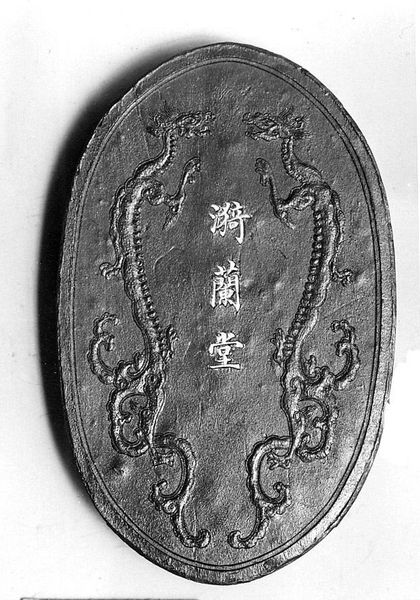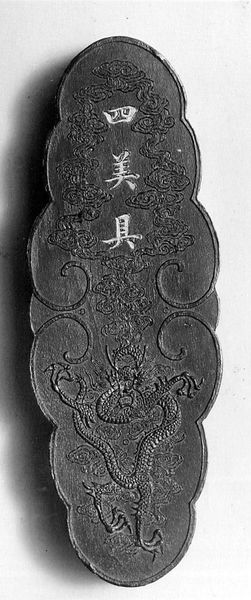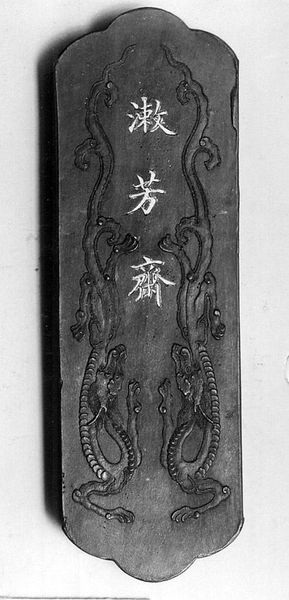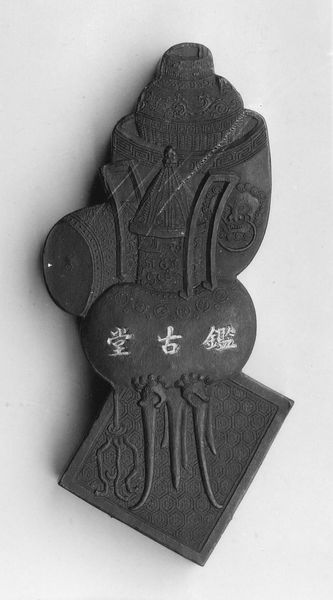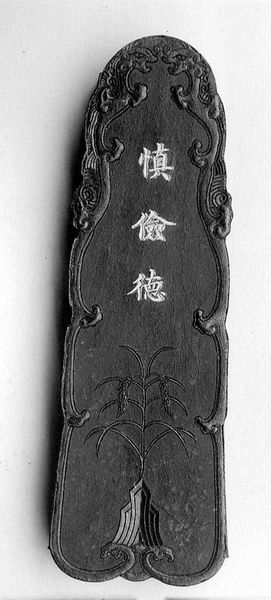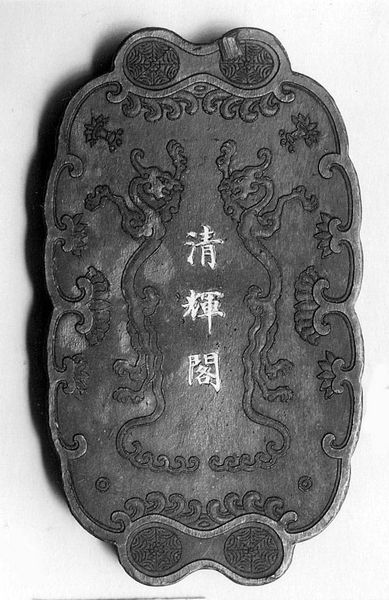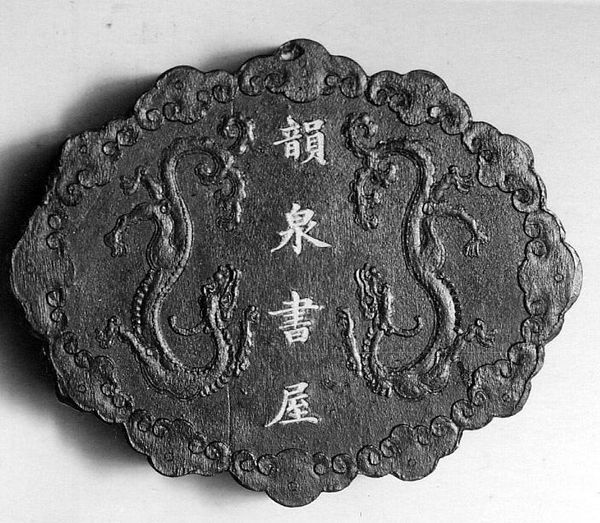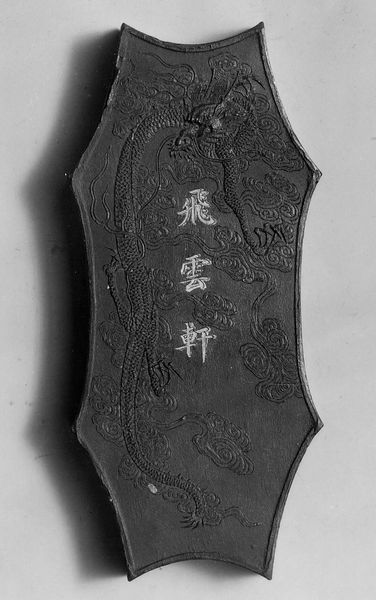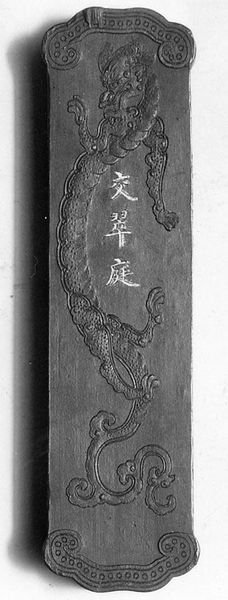
carving, relief, ink, wood, engraving
#
carving
#
asian-art
#
relief
#
ink
#
engraving
#
geometric
#
carved
#
wood
#
engraving
#
calligraphy
Dimensions: H. 3 7/8 in. (9.8 cm); W. 1 3/4 in. (4.4 cm)
Copyright: Public Domain
Curator: This piece, "Hall that Holds the Green," created by Jian Guzhai between 1871 and 1933, presents a compelling example of wood carving and ink rubbing. It's currently housed here at the Metropolitan Museum of Art. Editor: My first impression is one of dense precision; it feels almost architectural despite being a relatively small-scale carving. I’m immediately drawn to how the textures achieved through engraving affect the light. Curator: Exactly, the interplay of texture is critical. Look closely and you'll see twin dragons flanking vertical calligraphy. This deliberate symmetry echoes traditional East Asian power structures, embodying ideals of balance. Given the dating, do you think its production might mirror times of upheaval? How does that affect your reading of these symbolic structures? Editor: Certainly, the social context plays into my understanding. I see how the production itself indicates a very particular socio-economic framework. Wood as a material dictates specific craftspeople with the skills and workshops necessary for production, especially regarding detailed engravings. Considering ink as the key element also evokes labor-intensive production and circulation, not merely spiritual expression but something that must be available, distributed, and consumed. Curator: The artist uses traditional motifs but seems to engage in subtle reinterpretation. The dragons, for instance, usually symbolizing imperial authority, here exist within a domestic context suggested by the “Hall” in the title. How can we view these mythical symbols and domestic spaces existing alongside each other? Editor: That prompts consideration of its materiality as crucial. The object itself probably served some functional purpose. It likely stood in somebody’s hall. But the production suggests a desire for more. It highlights a society that appreciates material objects imbued with status, not simply the utility of engraved words, the labor, skill, and materials themselves becoming statements. The consumer decides it to be the object, more than its immediate message Curator: The carving acts as a tangible link between personal identity and larger cultural narratives. This tension between individual creation and societal norms really encapsulates the beauty of examining objects within specific sociopolitical and art historical frameworks. Editor: Indeed. Seeing art as intertwined with modes of making offers ways to look beyond conventional reading to social lives involved with the artistic labor.
Comments
No comments
Be the first to comment and join the conversation on the ultimate creative platform.
